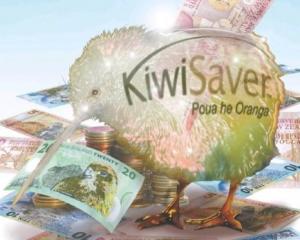
Now I didn’t know I was a Swiftie. Tay Tay wasn’t really in my dictionary. But, there I was, like many other parents of teenage daughters, multiple screens open, desperately refreshing, in late June last year when the tickets for her Australian concerts went up for sale.
Luck shone upon us and it felt almost like a Willy Wonka and the golden ticket moment. It was to be a long eight months before we were booked to join 96,000 other screaming fans at what was to be Taylor Swift’s biggest show to date.

However, if I had to embrace all things Taylor (including understanding a little NFL on the way through) I decided to make it more than a concert and seized the opportunity to make this a learning exercise.
That’s the thing about education — it can be anywhere, anytime and one should grab every opportunity to engage with children on financial, economic and social concepts as you unpack the world around you.
Media has swirled about the economic impacts of the Eras tour and the consumer spending it will generate. At one point I read that in the United States alone, it was projected to generate close to $5 billion in spending.
Furthermore, if Swift were an economy she would be bigger than 50 countries. This certainly opened up conversations around the global economy and who are its main players, and, in doing so, a new perspective to the map pinned on the bedroom wall.
Reserve Bank of Australia governor Michele Bullock was quizzed about the tour’s impact on the economy and whether it would be inflationary. I have previously written about how pushing a supermarket trolley around can be a lesson in inflation but this one was more interesting.
Would it be Australians at the concert or tourists travelling over and adding new money into the economy? Would Australians simply be spending their discretionary money at Swift’s gig and adjusting their spending elsewhere in order to afford the occasion?
What does it cost a Swiftie from New Zealand to travel and stay? Is the friendship bracelet phenomena (Swifties wear and exchange bracelets at each show) a lesson in supply and demand, with bead shortages a reality for some? All great opportunities to highlight financial and economic concepts and open up the language of money.
It further created interesting dialogue around what you do with a windfall as Swift gave life-changing bonuses rewarding her dancers, riggers, sound technicians and the like.
Do you repay the mortgage, do you invest it in the markets, put it into retirement savings or perhaps education funds for future studies? How do you make such decisions and who do you go to for advice on what to do?
Swift’s carbon footprint considerations and her offsetting activity as her personal jet whizzed around the planet came into the conversation mix, along with philanthropic activity as food banks in cities where she performed became beneficiaries.
There were discussions around music ownership; my Spotify was taken over and updated with the "correct" Swift versions. Time magazine named her person of the year for 2023 and a Swiftposium conference was scheduled covering multi-faceted papers on her global impact. Such themes deepened our conversation further still around cultural impact and empowerment.
"Swiftonomics", a term first coined by Bloomberg, looks set to stay and that’s good news for me. While the tunes still play in our house, the headlines keep coming and that means I can continue to pop conversation in between the lyrics. So far I would summarise our shared learnings as: the power of supply and demand, from ticket prices and aeroplane tickets to sequins and beads; markets are real and demand and supply dictate price; pay attention and get in early where you can.
While it appears Swift is an endless moneymaking machine, money is indeed limited for us mere fans. Deciding how and where you spend your money is a choice that needs to be made. Budgets are real, whether you are a Swiftie or in charge of a country’s money supply. Everyone had to make choices around Swift appearing in their city and what it would mean to the sum of money available to spend.
Money spent is how value is generated, from the fans drinking in the coffee shops to the workers using their bonuses, the wheels of the economy churned.
Not all things are economic. Some things are bigger than money, as proved nicely by the existence of Swiftposiums but also by the fact that money has no value until you give it one. There were 96,000 people at the MCG who understood the concept of making memories and the associated value that represents.
Teachable moments should be grabbed where possible, so whether it’s Swift, prepping for your children’s sports team to travel and compete away from home or the purchase of something new for your house.
Use the opportunity to get your children and grandchildren thinking more and further normalise the language of money.
- Trish Oakley is an Executive at Forsyth Barr. This is not a recommendation to buy or sell any financial product and does not take your personal circumstances into account.





